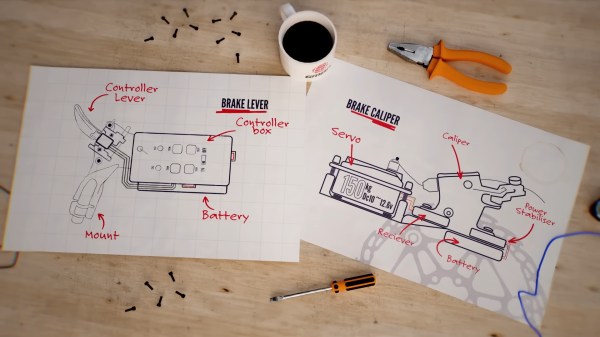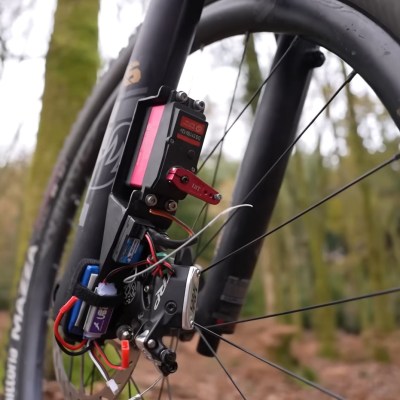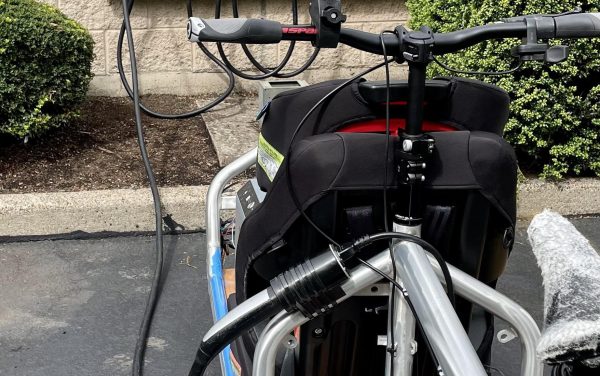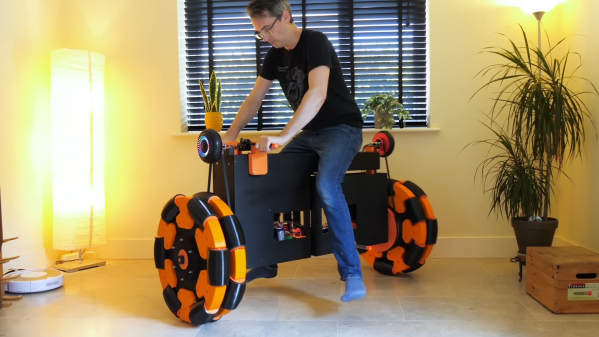Unless you’re living in a bicycle paradise like the Netherlands, most people will choose to add some sort of illumination to their bicycle to help drivers take note that there’s something other than a car using the road. Generally, simple flashing LEDs for both the front and the rear is a pretty good start, but it doesn’t hurt to add a few more lights to the bicycle or increase their brightness. On the other hand, if you want to add some style to your bicycle lighting system then this persistence of vision (POV) display called the BikeBeamer from [locxter] might be just the thing.
The display uses four LED strips, each housed in their own 3D printed case which are installed at 90-degree angles from one another in between the spokes of a standard bicycle wheel. An ESP32 sits at the base of one of the strips and is responsible for storing the image and directing the four displays. This is a little more complex than a standard POV display as it’s also capable of keeping up with the changing rotational speeds of the bicycle wheels when in use. The design also incorporates batteries so that no wires need to route from the bike frame to the spinning wheels.
This is an ongoing project for [locxter] as well, meaning that there are some planned upgrades even to this model that should be in the pipe for the future. Improving the efficiency of the code will hopefully allow for more complex images and even animations to be displayed in the future, and there are also some plans to improve the PCB as well with all surface-mount components. There are a few other ways to upgrade your bike’s lighting as well, and we could recommend this heads-up headlight display to get started.



 Inspired by the controller for an RC car, [Blake] picked a 150 kg servo attached to a cable-actuated hydraulic disc caliper to apply the braking force. The servo, receiver, power stabilizer, and batteries were all mounted on a custom steel plate fabricated to mount under the caliper. [Blake] cut up an old set of mountain bike brake levers to reuse the handlebar mounts and then put the batteries, controller, and finger triggers on them.
Inspired by the controller for an RC car, [Blake] picked a 150 kg servo attached to a cable-actuated hydraulic disc caliper to apply the braking force. The servo, receiver, power stabilizer, and batteries were all mounted on a custom steel plate fabricated to mount under the caliper. [Blake] cut up an old set of mountain bike brake levers to reuse the handlebar mounts and then put the batteries, controller, and finger triggers on them.














